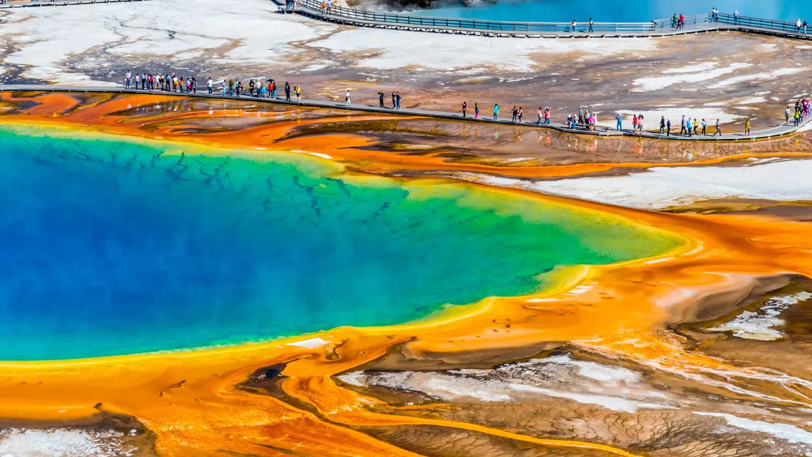Beneath the tranquillity of Yellowstone National Park in the United States, a vast magma chamber lies dormant. It’s the source of the area’s geysers and hot springs, but NASA scientists say it’s also a potential supervolcano, one of the greatest natural threats to modern civilization.
Therefore, NASA has created an ambitious plan to keep the volcano dormant. The agency’s plan would also provide electricity to the surrounding area; however, the project would cost a whopping $3.46 billion.

Asteroid collisions and the eruption of the Yellowstone Caldera chamber are both extremely unlikely to occur in our lifetime. A 5-10 kilometre wide asteroid has a 0.000001 percent chance of hitting Earth, and Yellowstone isn’t expected to erupt for another 10,000 years.
However, in 2017, Brian Wilcox, a member of a NASA explains Brian Wilcox of Nasa’s Jet Propulsion Laboratory at the California Institute, said: “I was a member of the Nasa Advisory Council on Planetary Defense which studied ways for NASA to defend the planet from asteroids and comets. I came to a conclusion during that study that the supervolcano threat is substantially greater than the asteroid or comet threat.”
On Earth, there are around 20 supervolcanoes, with massive eruptions occurring once per 100,000 years. Therefore, a lengthy volcanic winter could prevent civilization from producing enough food to feed its current population, which is one of the most severe issues of an eruption. In 2012, the United Nations estimated that global food supplies would last 74 days.

In an interview, Wilcox went into great depth on NASA’s efforts to prevent this from happening. According to the Space Agency, the plan comes at a cost, but it could help avoid a potentially catastrophic threat to humanity. Outside of Yellowstone National Park, holes would be drilled into the volcano’s lower sides.
After that, the project’s developers would pump cool high-pressure water into and out of the supervolcano. The water that enters the volcano cools it, while the water that leaves reaches temperatures of roughly 350°C (662°F) and might be used to generate energy.
“Yellowstone currently leaks around 6GW in heat,” Wilcox told the BBC in 2017. “Through drilling in this way, it could be used to create a geothermal plant, which generates electric power at extremely competitive prices of around $0.10/kWh.” However, according to Wilcox, the plan is only theoretical at this point, and there is a lack of data on the risks of drilling into the side of a volcano.

Nonetheless, Wilcox believes the $3.46 billion experiment might be funded by geothermal businesses seeking a return on their investment. In addition, they would “get electricity which can power the surrounding area for a period of potentially tens of thousands of years.” Also, “the long-term benefit is that you prevent a future supervolcano eruption which would devastate humanity,” Wilcox said.
Beyond establishing a mechanism for reducing the threat of supervolcanoes like Yellowstone, NASA believes that its proposed methodology would inspire others in the scientific community to get engaged. Ironically, these massive, potentially lethal magma chambers have the power to provide energy and mitigate the effects of climate change, humanity’s most immediate existential concern.


